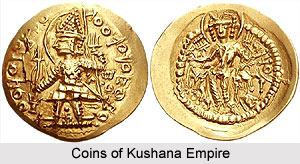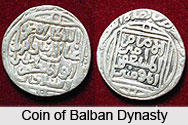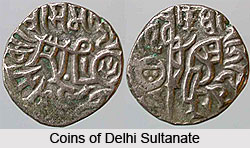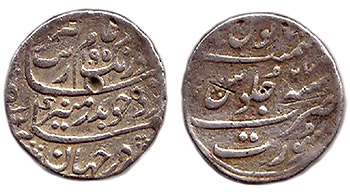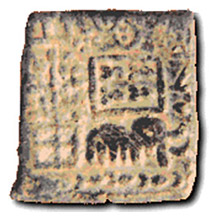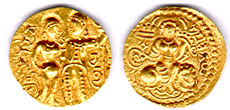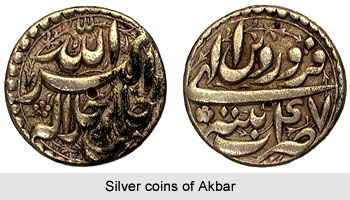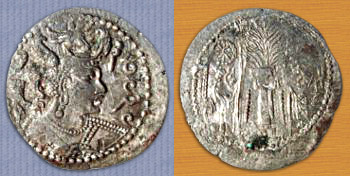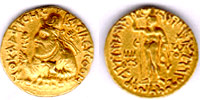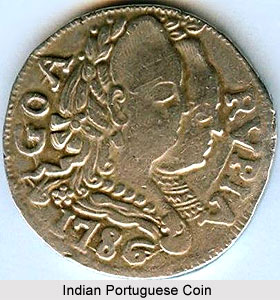The most ancient coins of India are commonly acknowledged as `punch-marked coins`. The Ashtadhyayi cites that the metallic pieces were stamped (ahata) with symbols (rupa). These were in circulation along with the unstamped variety of metallic coins which were referred to as the nishka, satamana and pada. There is also a mention of shana and karshapana, terms employed for different monetary denominations. As the name indicates, these coins carry the symbols of assorted types, punched on pieces of silver of defined weight.
Fascinatingly, the earliest Indian coins have no determined shapes and were mostly unifaced. Secondly, these coins are deficient in any inscriptions scripted in contemporary languages and almost always struck in silver. These unique characters makes ancient Indian coins stand very much apart from their contemporaries in Greece. Punch-marked coins are marked with 1-5 (and at times more) marks, representing a choice of symbols. Two well acknowledged numismatists, D. B. Spooner and D.R. Bhandarkar, after careful study, independently had concluded that the punching of these umpteen symbols exemplifying animals, hills, and tree and human figures followed a definitive pattern and these coins were always issued under royal authority.
Punch Marked Coins
There is no particular date that has been stated for the discovery of advent of "punch marked coins". Historians say that the first trace for this coin were available in Harappa and Mohenjo Daro in the Indus Valley Civilization. There is no proper evidence to establish that these coins were actually from that era. However, it is widely believed that the "punch marked coins" were issued somewhere between the 7th and 8th century BC and 1st century AD. These coins got its name from the manufacturing technique, mostly made of silver, with symbols embossed on the coins on either side. The coins were first issued by the merchant guilds and then by the States, and were extensively used for the purpose of urban development and trade activity.
Dynastic Coins
The exact date of the dynastic coin usage is contentious. The earliest use of these coins relate to the dynastic rules of Kushans, Saka-Pahlavas and Indo-Greeks. The main use of these coins was between 2nd century BC and 2nd century AD. The Indo-Greek coins are signified by the Hellenistic traditions, where the Greek gods and goddesses figure prominently in the coin surface, along with the issuer`s portrait. These coins, with Greek gods and legends, are extremely significant as it has helped in the reconstruction of Indo-Greek history.
The Saka coinage is perhaps the earliest dated coins, which goes back to the Saka era, 78 AD. The official calendar of the Indian Republic is represented by the Saka era.
Much of the Kushan coinage attributes to Vima Kadphises. The coins from the Kushan Dynasty generally depict iconographic forms taken from Mesopotamian, Zorastrians, Greek and Indian mythology. Mostly Indian gods were portrayed in those coins and were influenced by subsequent issues, namely the Guptas.
